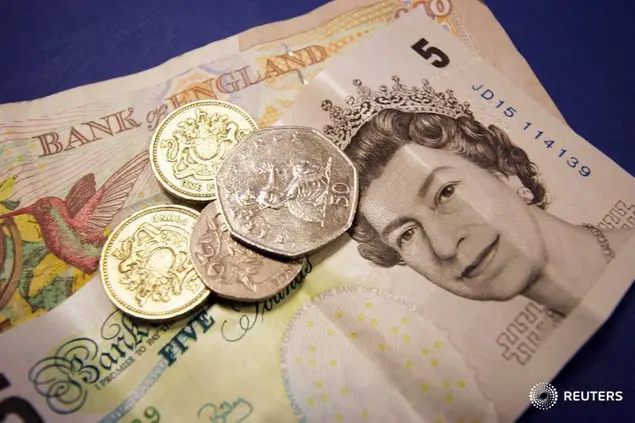PHOTO
The pound rose on Friday but was still headed for a second consecutive weekly fall against the dollar after a week of turmoil across global markets hit higher-yielding assets and as investors switch focus to next week's Bank of England meeting.
The pound, which hit one-year highs last week above $1.31, is heading for a 0.5% decline against the dollar this week.
It's still on track for a gain of 1.6% this month and remains this year's top-performing G10 currency against the dollar, with a 1.1% rise, compared with runner-up the euro , which is down 1.67% against the dollar this year.
But the recent swell of volatility across markets has hit the pound harder than currencies that are lower yielding, such as the yen or the Swiss franc.
Sterling was up 0.14% on the day at $1.28685.
Futures traders currently hold the biggest bullish bet on sterling in history, according to weekly data from the U.S. markets regulator.
Speculators currently hold a net long position worth $10.77 billion that has almost trebled since the start of this month.
In an environment such as the one this week, when currencies with lower interest rates tend to perform better, sterling has come under pressure.
Broker IG notes that its proprietary retail trader data shows just 37.63% of traders are net-long, with a ratio of 1.66 short traders for every long trader.
In theory, this would suggest the pound has scope for more gains, given the majority of the retail market is short, but IG believes the deterioration in investor sentiment might play a bigger role.
"While a contrarian view to crowd sentiment suggests GBP/USD prices may continue to rise due to the majority being net-short, recent changes in sentiment indicate a potential downward reversal in the current GBP/USD price trend," IG said.
The Bank of England meets next week and markets are currently attaching roughly a 50/50 chance of a rate cut.
This is slightly at odds with a majority of economists polled by Reuters that believes the central bank will deliver a quarter-point cut next week.
It has been harder than usual for investors to work out what the thinking among BoE policymakers might be, given that most have not spoken publicly for more than two months due to rules in the run-up to a July 4 national election.
Investors have been left guessing whether recent higher-than-expected services prices are enough to prevent the central bank cutting rates from their 16-year high of 5.25%.
(Reporting by Amanda Cooper; Editing by Gareth Jones)
